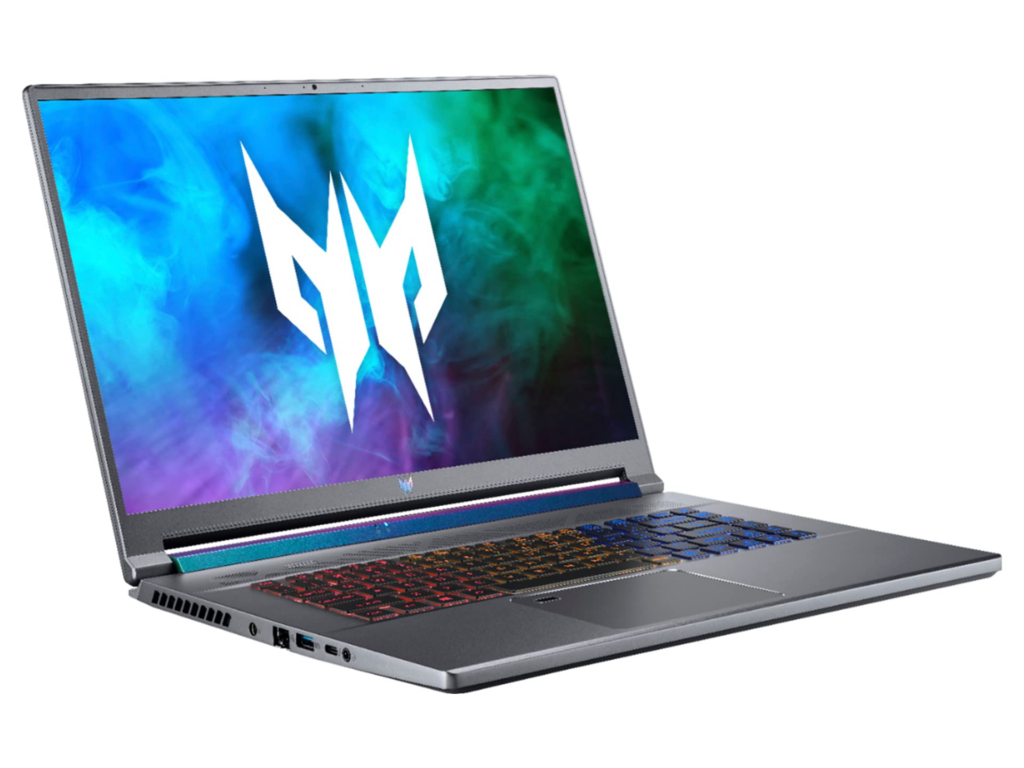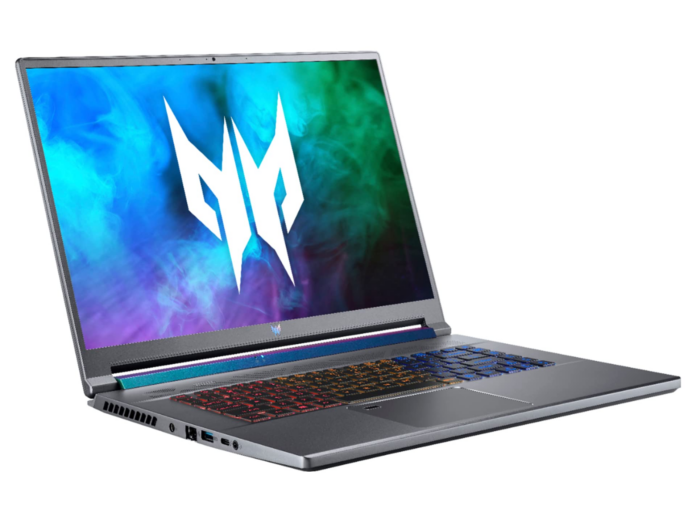Acer, a laptop manufacturer, often goes the extra mile to be unique. Take the Predator Triton 900, for instance. It’s a bold device with a 360-degree rotating screen that I found mostly unnecessary. Recently, Acer revealed its intention to incorporate SpatiaLabs glasses-free 3D tech into gaming laptops. While I appreciate the ambitious attempts, I’m more drawn to laptops that subtly hint at their gaming capabilities. After a week with the Predator Triton 500 SE, I can confirm that Acer has achieved this.
The Triton 500 SE is a powerful gaming laptop disguised in a sleek metallic body. It would blend seamlessly in a professional office or a lecture hall. It doesn’t rely on flashy LEDs or extravagant case decorations. It’s all about performance. While it’s not the only understated gaming laptop out there, it’s more affordable than competitors like the Razer Blade, starting at $2,300.
The Triton 500 SE stands out from typical productivity laptops due to its impressive 16-inch screen. The 16:10 aspect ratio makes it slightly taller than standard widescreen displays, which is handy for document work. Our review model came with a 240Hz WQXGA model (2,560 by 1,600 pixels), striking a perfect balance between sharpness and smooth refresh rates. It doesn’t support HDR, but it offers a high brightness of 500 nits and full coverage of the DCI-P3 gamut. Despite the screen contributing to the Triton’s weight of 5.3 pounds, it’s still lighter than most 17-inch gaming laptops.
The stunning display is powered by Intel’s 12th-gen processors and NVIDIA’s latest RTX 30-series GPUs, up to the impressive RTX 3080 Ti. Our unit came with that GPU, Intel’s top-end Core i9 12900H, 32GB of LPDDR5 RAM, and a fast 1TB NVMe SSD. This configuration intrigued me, leading me to review the Triton 500 SE. Can this modest laptop satisfy gamers? The answer is yes.
Take Halo Infinite as an example. It achieved a solid 85fps at the Triton’s native resolution on ultra graphics settings. Despite missing the HDR and wide view I’m used to on the Alienware QD-OLED ultrawide monitor, I was amazed at how immersive the game felt on a 16-inch display. The taller 16:10 aspect ratio contributes to this – it sometimes felt like I was diving into Halo Infinite’s maps. The 240Hz display also excelled as I lowered the game’s graphics settings to achieve higher framerates.

Acer Predator Triton 500 SE
Performance
Processor: Intel’s 12th-gen processors
GPU: NVIDIA’s RTX 30-series GPUs, up to RTX 3080 Ti
RAM: 32GB of LPDDR5 RAM
Storage: 1TB NVMe SSD
Battery Life
Lasted five hours and twenty-five minutes in benchmark
Connectivity
Various ports including USB 3.2 Type A, USB-C Thunderbolt 4, HDMI, Ethernet, and an SD card slot
Retained headphone jack
Pricing
Starts at $2,300, cheaper than Razer Blade 15 and Blade 17
Review unit’s hardware costs around $3,000
Older models with 11th-gen Intel chips available for under $2,000
Tech enthusiasts will appreciate the Triton 500 SE’s built-in overclocking capabilities. Acer’s software simplifies the process of adjusting clock speeds and thermal profiles. I was just happy to have a simple “Turbo” button on the keyboard. It maxes out the fans and automatically overclocks the system, leading to an 8 to 10 percent increase in performance in Halo Infinite and all the benchmarks I ran. The only downside? It’s quite loud, so you might want to use headphones.
Even without overclocking, the Triton 500 SE crushed all the benchmarks we ran, delivering performance mostly on par with the Razer Blade 15. There were a few instances where the Razer pulled ahead, like in PCMark 10 and Geekbench 5’s Compute test. But in others, including Cinebench R23 and 3DMark’s Port Royal ray tracing benchmark, the Triton took the lead. This is partly due to our review unit having a slightly faster 12th-gen processor. Activating the Turbo switch boosts the Triton’s numbers even further.

NVIDIA’s Advanced Optimus feature, which smartly switches the Triton’s GPU between integrated and discrete graphics, performed flawlessly in my tests. I didn’t encounter the performance bottlenecks seen in older Optimus machines. A MUX switch allows manual GPU swapping without a system reboot.
After hours of benchmarking and gaming, the Triton 500 SE stayed relatively cool. The CPU hovered around 78 Celsius under load, while the GPU reached 83 Celsius. It never felt hot, and the fan noise was as expected with the Triton’s default performance settings.
Despite Acer’s success with cooling and performance, some aspects of the Triton 500 SE’s hardware are disappointing. The keyboard is adequate for gaming but lacks feedback for extended typing. The large, smooth trackpad is appreciated, but the clicking mechanism felt stiff. The fingerprint sensor on the trackpad often interferes with swiping. I’d prefer it on the power button or a Windows Hello webcam. Acer could also improve the audio by including more than just a pair of tinny stereo speakers.
Battery life is another letdown, a common issue with powerful gaming laptops. The Triton 500 SE lasted five hours and twenty-five minutes in our benchmark, which is 17 minutes less than the Razer Blade 15. During a typical workday, it usually lasted around five hours before needing a recharge.
Most users would likely keep their workstations plugged in for optimal performance. Acer included all necessary ports for a true workstation, including two USB 3.2 Type A connections, dual USB-C Thunderbolt 4 ports, HDMI, Ethernet, and an SD card slot. Acer thankfully retained the headphone jack, which many laptop makers are removing.
The Acer Predator Triton 500 SE starts at $2,300, $200 less than the Razer Blade 15 with 12th-gen Intel chips and $400 less than the most recent Blade 17. Be prepared to spend $3,000 for our review unit’s hardware (still cheaper than comparable machines from Razer and others). Older Triton 500 SE models with last year’s 11th-gen Intel chips are available for under $2,000. We’d recommend getting a 12th-gen chip for a significant performance boost.
The Triton 500 SE shows that Acer is more than just a producer of cheap and unsophisticated laptops. It’s refreshing to see Acer create a refined gaming notebook without unnecessary bling.

